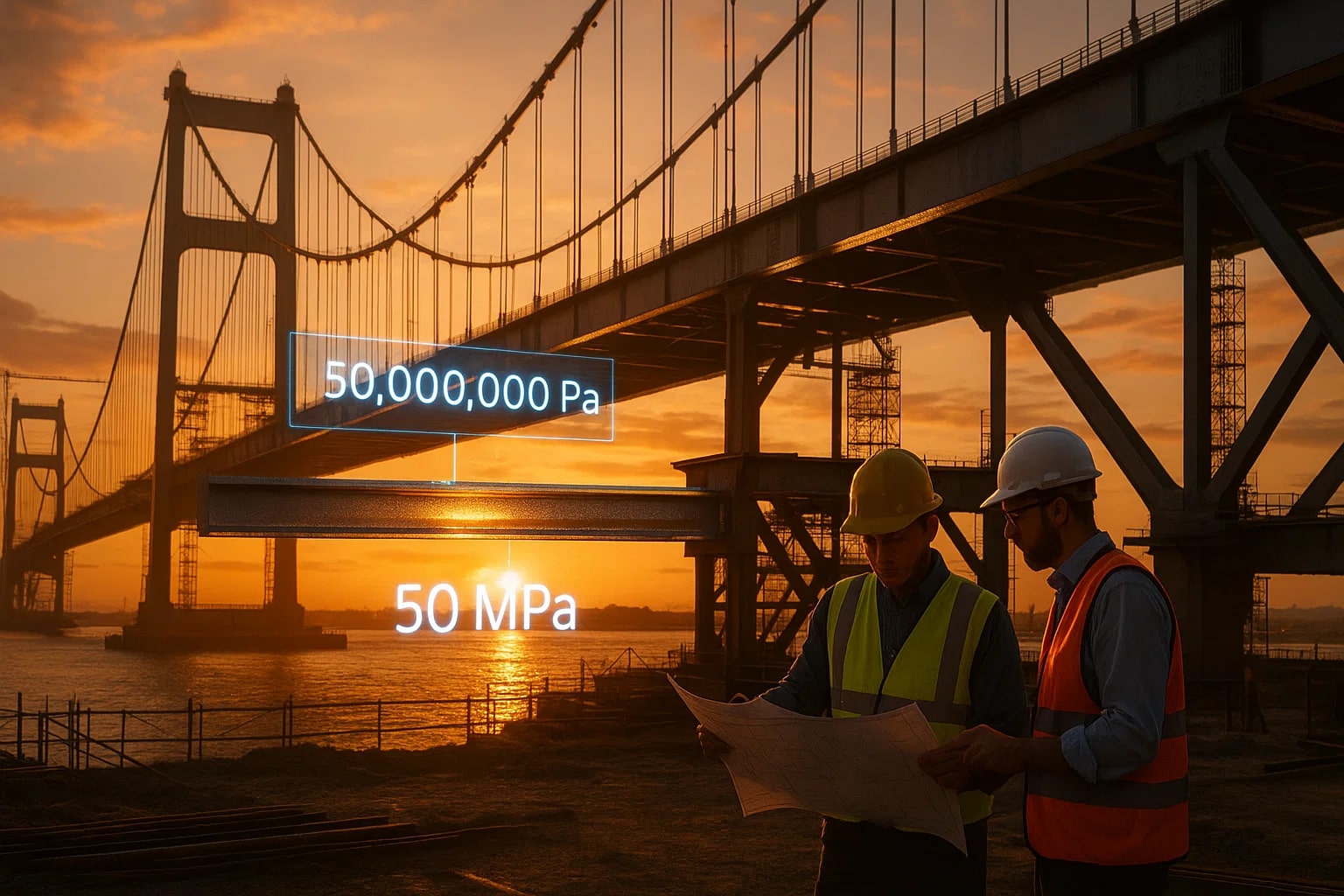pascal to megapascal – How to convert Pa to MPa
The pascal (Pa) is the SI base unit of pressure, perfect for precision but often too small for practical use in engineering. For large-scale applications, the megapascal (MPa) is preferred. Converting pascal to megapascal allows scientists and engineers to scale numbers into more practical values, especially in construction, hydraulics, and material science.

What is a pascal (Pa)?
A pascal equals one newton per square meter. It’s used for exact measurements but is usually too small for most real-world engineering pressures.
What is a megapascal (MPa)?
A megapascal equals one million pascals. It is widely used in engineering to measure structural stress, hydraulic systems, and material strength. For instance, concrete compressive strength is often given in MPa.
How to convert pascal to megapascal
Megapascal (MPa) = Pascal (Pa) ÷ 1,000,000
Example:
Megapascal = 5,000,000 Pa ÷ 1,000,000 = 5 MPa
For quick calculations, use the Conversion Tools on Jetcalculator. You can also explore more options like the Speed Converter.
Do you know?
-
About pascal: Atmospheric pressure at sea level is about 101,325 Pa.
-
About megapascal: Hydraulic presses in the automotive industry can exceed 30 MPa, enough to mold steel into car parts.
Building Bridges with Pressure
When designing large structures like bridges and skyscrapers, engineers rely heavily on stress calculations. While exact data may start in pascals, values are converted into MPa to make them easier to manage.
For example, concrete used in bridges typically has a compressive strength of 30–50 MPa, which equals 30,000,000–50,000,000 Pa. Expressing these values in Pa would be impractical, so MPa provides a clear, engineer-friendly scale. This shift from Pa to MPa ensures both accuracy and usability in construction projects.

Scaling for Clarity
The formula is simple: divide pascals by one million. But converting Pa to MPa is more than arithmetic — it’s about making information practical for real-world use. From atmospheric science to massive hydraulic machines, this conversion keeps numbers manageable and meaningful.

